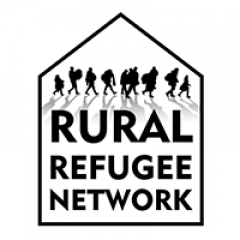The need for us, as global citizens, to protect and support refugees has never been more important. As of mid-2021, the UNHCR (the UN refugee body) registered a staggering 84 million people worldwide as forcibly displaced, the highest number ever registered. Of this population, a record 26.6 million people are identified as refugees, 68% of which originate from just five countries – the Syrian Arab Republic, Venezuela, Afghanistan, South Sudan, and Myanmar (UNHCR’s Refugee Population Statistics Database).
In Syria, over a decade of ongoing conflict and crisis has resulted in one of the world’s largest humanitarian and refugee crises. It is estimated that around 6.6. million Syrian refugees need our support and protection worldwide, many of which are hosted by countries neighbouring Syria.
Following the fall of Kabul to the Taliban in August 2021, Afghanistan has also been in a state of emergency, with the UN warning the country is on the brink of a humanitarian catastrophe. Over 5.7 million Afghans and host communities have fled to neighbouring countries, with a remaining 24 million people requiring vital humanitarian aid within Afghanistan.
Russia’s 2022 invasion of Ukraine triggered another humanitarian emergency and significant global refugee crisis. As at the end of March 2022, the UN estimated that around 4 million people have fled war-torn Ukraine for neighbouring countries, with a remaining 6.5 million people displaced within Ukraine.
Over the past decades, the UK has organised several resettlement schemes in response to these humanitarian crises:
- Syria – In 2014, the UK launched the Syrian Vulnerable Persons Resettlement Scheme (VPRS). Running until 2020, VPRS offered resettlement for around 20,000 refugees fleeing the crisis (following the expansion of the scheme in 2015). Alongside VPRS, the UK also launched the Vulnerable Children’s Resettlement Scheme (VCRS) in 2016, which aimed to resettle up to 3,000 at-risk refugee children and their families from the MENA region (GOV.UK). Both schemes concluded in 2021, with VPRS successfully resettling 20,319 refugees and VCRS providing resettlement for 1,838 refugees (GOV.UK).
Community action and support were crucial to the success of these schemes, with RRN and other local organisations playing a vital role in helping Syrian and other refugees settle into their new lives.
- Afghanistan – In April 2021, in response to the changing situation in Afghanistan, the UK launched the Afghan Relocations and Assistance Policy (ARAP). This scheme offers relocation or other assistance to formally locally employed staff in Afghanistan. In January 2022, the UK formally opened a new resettlement programme, the Afghan Citizens Resettlement Scheme (ACRS), to support some Afghan citizens.
-
Ukraine – In March 2022, in response to the emerging Russia-Ukraine war, the UK government launched an extended visa scheme to enable more eligible Ukrainians to join UK-based family members. This expanded the existing Ukraine-UK visa scheme which only allowed specific immediate family members to join UK-based families. The Homes for Ukraine Scheme allows anyone in the UK with a spare room or home to offer accommodation to people fleeing Ukraine, provided tenancy is for a minimum of six months.
Refugees may seek resettlement in the UK through various resettlement programmes:
- UK Resettlement Scheme (UKRS): This programme continues to offer a safe and legal route for vulnerable refugees in need of protection. Funding is available to support local authorities, healthcare providers, and community sponsors in assisting refugees for up to five years.
- Afghan Relocations and Assistance Policy (ARAP): For Afghan citizens who worked for or with the UK Government in Afghanistan
- Afghan Citizens Resettlement Scheme (ACRS): Launched in January 2022, the ACRS aimed to resettle up to 20,000 Afghans. By the end of September 2024, approximately 12,400 individuals had been resettled under this scheme.
- Community Sponsorship Scheme: This programme enables community groups to support the resettlement of refugees, providing housing and integration assistance. In the year ending September 2022, 280 refugees were resettled through this scheme.
- Mandate Resettlement Scheme: This scheme facilitates the resettlement of refugees who have a close family member in the UK willing to accommodate them. As of the year ending September 2022, six individuals were resettled under this programme.
When thinking about the refugee crisis, it’s also important to remember:
- These numbers are massive. These numbers are people. Many of these people are in a limbo state in other countries around the world and need urgent aid. Beyond each statistic is a person forced to flee everything they know – their home, family, job, and life as they know it.
- Refugees do not leave their country out of choice – for most, it is a life-or-death choice borne out of conflict, persecution, hunger, or climate change (Global Citizen).
- Pictures, stories and information on the issues flood our screens, but it is important to just pause to register the sheer scale.
- Over half the world’s refugees are children. By mid-May 2021, over 1 million children were born as refugees (UNHCR’s Refugee Population Statistics Database).
- There are also 4.4 million asylum-seekers and 4.3 million stateless people who have been denied access to a nationality (if stateless) and basic rights, although the true figures are likely to be much higher (UNHCR’s Refugee Population Statistics Database).
- Despite the numbers seen in boats, on foot, any way they can move, Europe has taken in just 10% of the world’s refugees (UNHCR’s Refugee Population Statistics Database) – a significantly small number given Europe’s size and wealth.
- Amazing people across Europe have helped these desperate people but more can and must be done.
https://www.youtube.com/watch?v=rmeTkowJq98s
